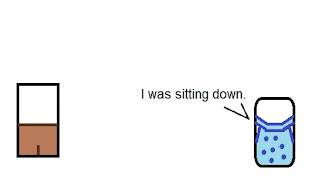I wasn’t sure if I would continue with this blog after
the semester ended, but I kind of miss it, so…
I guess I’ll keep writing it.
But, if you’re reading this, you already knew that. Well
then, let’s get to the interesting bit!
In O. Chem, I learned-
11.) How to draw a damn good hexagon in under two seconds.
Glorious, is it not?
10.) It is completely possible to get a cramp in your
thumb.
9.) It is completely impossible
to get rid of a cramp in your thumb.
8.) I can take notes in my sleep.
7.) My hair is an excellent indicator of my stress level.
6.) Chemistry teachers really do know how to make meth,
and will explain the process in great detail.
5.) There are many compounds that explode upon contact
with water.
Labs involving these compounds will, invariably, occur on
days when there is a thunderstorm.
4.) The aforementioned compounds are kept in the same
rooms as equipment worth several hundred dollars.
3.) The aforementioned rooms do not have security
cameras.
2.) Some people aren't joking when they say their homework
could kill them.
1.) No matter how much time you have to sink into studying for O. Chem, your dogs will still love you.
















































